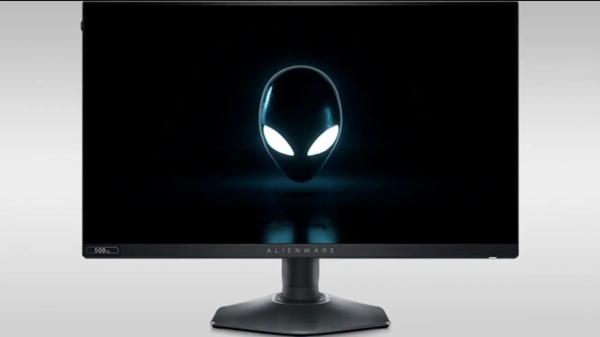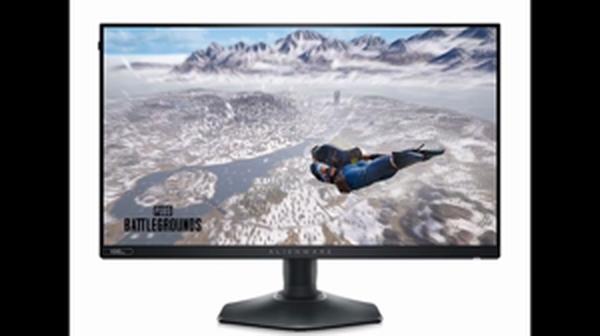500Hz Gaming Glory: My Thoughts on Alienware's new AW2524HF Monitor
Introduction
Jumping into the realm of 500Hz with the Alienware AW2524HF felt like stepping onto another level of gaming performance—not entirely game-changing like the leap from 60Hz to 144Hz, but still noticeable, especially in the FPS domain. The first time I saw Counter-Strike 2 running smoothly at triple-digit framerates on this monitor, it blew my mind. I've been a staunch adherent to 240Hz monitors, but when using the AW2524HF, my quick mouse movements, which are crucial in competitive gameplay, felt undeniably more intact. We're talking about a display that delivers a sublime experience, provided you have the right hardware to back it up. When matching it with my RTX 3080 and the Ryzen 7800X3D, the monitor was in its element, pushing past 500 frames per second in FHD 1080p. The combination of this monitor with such high-end components brought out an unprecedented level of fluency in movement and action in the game, making the $700 price tag seem like a worthwhile investment for the edge in competitive gaming. From a personal standpoint, the difference going from 240Hz to 360Hz might not have been stark, but the upgrade to 500Hz made a subtle yet crucial difference, especially in how smoothly the gameplay flowed. It isn't just about being able to detect new frames; it's about the overall feel of the game that's harder to quantify but easy to appreciate. The AW2524HF is a luxury for sure, but for those in the esports scene, it's a glimpse into what the future holds. Sure, it's a hefty price to pay for a 24.5" FHD monitor, but when pull off that unbelievable flick shot, you begin to appreciate where that extra money went. The monitor is, without doubt, aimed at those who take their gaming very seriously, for whom every millisecond is the difference between winning a round or staring at a death screen. Knowing Alienware's commitment to pushing the boundaries, the AW2524HF offers a FreeSync range between 48-500 Hz and G-Sync compatibility. A feature I find quite commendable is the inclusion of a 10-bit color depth, which is a nod toward not just speed but visual quality too. A 0.5ms GTG response time ensures that ghosting is virtually non-existent. All this comes in an excellent build quality that Alienware is known for. However, I did notice an absence of backlight strobe, which some may miss for that extra motion clarity enhancement. I must say, using this monitor has been a revelation for eye fatigue as well; the sheer smoothness of the display makes long gaming sessions much less taxing. Although I might sound a bit biased towards the higher refresh rates, the comfort level it provides cannot be understated. In the context of whether this is the future for competitive gaming, it absolutely sets the bar high and provides a window into where high-end gaming displays are headed. While it might not be the go-to for the average gamer, for those truly invested in getting that performance edge, the Alienware AW2524HF proves to be a gateway to achieving just that—with lightning-fast reflexes and smoother gameplay. As the price inevitably drops over time, it's likely to become a more accessible titan of speed in the gaming community.
Esports and the Pursuit of Ultra-High Refresh Rates

Esports professionals are always seeking out that edge over the competition, and hardware that can shave off milliseconds of reaction time is worth considering. It's interesting how we've quickly transitioned from the days when 144Hz monitors were considered top-notch for competitive gaming to a time when anything less than 240Hz almost feels sluggish. Even as someone who's spent a considerable amount of time behind a 240Hz monitor, the sheer unprecedented nature of Alienware’s AW2524HF delivering a 500Hz refresh rate feels somewhat surreal.
I can attest that, for fast-paced first-person shooters like Counter-Strike 2, where split-second decisions can mean the difference between a triumphant victory and a crushing defeat, the fluidity and responsiveness of the action at 500Hz is palpable. Alienware has long been a brand synonymous with high-end gaming gear, so it's assuring to see them push the boundaries even further with a product that embodies the pinnacle of current display tech.
Now, it's true that to the untrained eye, the differences in refresh rates as you climb higher get harder to discern. I remember the leap from 60Hz to 120Hz being nothing short of a revelation, while the jump from there to 144Hz was subtler but still significant. From 240Hz to 360Hz and beyond, the law of diminishing returns might argue the improvements are minuscule, yet every professional player knows that at the highest tiers of gameplay, every millisecond counts. This Alienware monitor isn't about catering to the average gamer; it's forged for those who breathe and live in the high-stakes world of competitive esports where framerate is king.
Coupled with a monitor’s high refresh rate is the need for a powerful GPU, like an RTX 3080, and a potent CPU combo that can churn out the necessary frames to make the most of that 500Hz capability. It's in these configurations that the Alienware AW2524HF takes the lead, offering an experience that can overshadow the competition for those who have the hardware to back it up.
Now, let's talk about eye fatigue. It's a real concern for anyone who spends hours gaming or training. The higher the refresh rate, the more comfortable the viewing experience, leading to potentially longer play sessions without the strain. There's a tangible feel of comfort when gaming at these high refresh rates. With the AW2524HF, it feels like the monitor is in perfect sync with my hand-eye coordination, a seamless conduit for my in-game actions.
As for the design, Alienware retains its signature futuristic look with this model. The bezels are incredibly thin, and although it isn't laden with luxury features, it doesn't skimp on essential aspects such as robust build quality, ergonomic adjustments, and ample connectivity options, including HDMI 2.1 and DisplayPort 1.4.
For the enthusiasts out there, it's worth noting that other reviewers, like those at TFTcentral and RTings, might provide more in-depth analyses of the response times and input lag, bringing forth a higher degree of scrutiny. However, from a user perspective and as someone entrenched in the esports scene, the AW2524HF is clearly not just another incremental update. It's a statement that Alienware is dedicated to meeting the needs of esports elites, and it's exciting to think where such technology could lead in the future of competitive gaming.
The Trade-Offs: Resolution vs Refresh Rate

When grappling with the decision between a crisp, high-resolution display and the liquid-smooth action of a high refresh rate monitor, I lean towards the latter – and the Alienware AW2524HF is a testament to my preference. Traditional wisdom might suggest that 1080p is antiquated compared to the ubiquitous 1440p and 4K options, but there's an allure to 500Hz that's hard to overlook for enthusiast gamers like myself.
However, don't be fooled; this isn't about dismissing 4K. I've dabbled in higher resolutions and appreciate the detail they bring to sprawling landscapes in AAA games. But in the split-second world of competitive FPS gaming, the advantage tilts dramatically towards refresh rate. There's a tangible difference when every millisecond counts, and I've felt it firsthand. Gaming on the AW2524HF felt like the veil was lifted, with my mouse movements translating almost predictably onto the screen, offering a level of fluidity that I hadn't experienced before.
Moreover, playing at FHD (1920x1080) means I could drive frame rates that matched the 500Hz refresh rate without needing a supercomputer. Sure, a powerful GPU like the RTX 3080 only made the experience better, but the entry barrier wasn't as high as those beefy 4K monitors – accessibility is key. Eye strain, or rather the lack of it, was another noteworthy positive. The smoother transitions and reduced flicker could well mean longer, more comfortable gaming sessions.
Bear in mind, this isn't purely about the raw specifications. It's easy to get hung up on numbers, but it's the execution that impresses me most with the AW2524HF. Alienware has managed to maintain commendable color accuracy and sufficient contrast in a field where these aspects can be easily overlooked for speed. And let's not forget, this is an IPS panel, boasting great viewing angles – something that competitive gamers, who constantly adjust their seating and angles, will appreciate.
As a peculiar deviation from the norm, you'll find that the AW2524HF ditches the typical RGB lightning in favor of a more subdued design. The focus here is clearly on performance, which aligns with my personal philosophy on what makes a good gaming monitor.
I also tend to follow the trend of eSports standards for consistency, and a 24.5-inch size is what you'll commonly find in competitive scenes. Being accustomed to this benchmark makes it easier to maintain performance, even at LAN events, providing a familiar playground. For those interested in gaming hardware that meets eSports standards, you might enjoy reading about my experiences with the ASUS TUF Dash 15 Laptop, a device that's built with high-intensity gaming in mind.
Sure, there's talk of diminishing returns as you go up the refresh rate ladder and, to some, the jump from 240Hz to 500Hz might seem unremarkable. But remember, perception is subjective. Even if you can't perceive the difference, it doesn't negate the split-second advantage it provides to the most discerning and reflex-sensitive gamers.
Let's not forget that technology is in constant flux – today's luxury, such as this monitor which could easily drop to a more affordable price, becomes tomorrow's standard. As an early adopter, the AW2524HF doesn't just satisfy my current needs; it paves the way for the future of gaming, where I expect even more refined and immersive experiences. It may very well become the new benchmark as the gaming community continuously pushes the envelope, striving for the ultimate in performance.
Is the Alienware AW2524HF the Future of Competitive Gaming?

The Alienware AW2524HF seems to encapsulate the zenith of high-refresh-rate gaming monitors as it stands today. As someone who's been keenly following the evolution of gaming displays, the jump to 500Hz is something I both anticipated and viewed with a degree of skepticism. Was it going to be a game-changer or just another incremental step, barely noticeable outside the domains of competitive gaming?
Addressing the refresh rate first, let’s talk numbers. Having sampled everything from 60Hz to 360Hz, I admit the law of diminishing returns does apply. The leap from 144Hz to 240Hz was subtle, and the step to 360Hz even more so. However, the AW2524HF brings a smoothness that, in fast-paced games, feels almost surreal. It’s not that each frame is individually noticeable, but the overall fluidity creates a consistency that could only be described as the digital equivalent of a high-performance sports car - it's not about the split-second but the seamless journey.
I’m aware that such a fluid experience demands a potent combination of GPU and CPU, and I was fortunate to pair the monitor with an RTX 3080 and Ryzen 7800X3D. That moment when you’re gliding through a match of Counter-Strike 2, each micro-movement translates with precision on screen, it becomes evidence that this isn't just a luxury item, it's a tool for the dedicated.
In the world of esports where every millisecond can mean the difference between glory and defeat, having a monitor that can keep up with the high frame rates provided by today's cutting-edge hardware isn't just preferable, it's essential. The AW2524HF being the standard 24.5" inch, aligns perfectly with the competitive scene's requirements. It's sleek, precise, and while some might bemoan FHD resolution, in the heat of battle it's the speed that survives, not the pixel count.
I recognize that to the casual observer, or even the passionate gamer who enjoys a title's graphics as much as its gameplay, the FHD resolution on a $700 monitor might seem a glaring limitation. But this isn't a display targeted at those looking for cinematic expanses. The 24.5" size at 1080p is optimal for clarity and speed, a balance that is still the preference for many top-level players.
The trade-offs, of course, need consideration. Focusing solely on refresh rate oversimplifies the nuanced dance of display metrics that include response times, input lag, and color accuracy. It’s encouraging to see that in uncalibrated states the AW2524HF impresses with color fidelity and gamma consistency – a nod to those who want performance without being tethered to settings.
Lastly, a personal touch – my eyes thank me for the gentler experience. It's a stark reminder that while stats and performance benchmarks can dominate the conversation, user comfort is paramount. Extended gaming sessions somehow feel less taxing, almost as if the monitor is actively reducing the strain on my visual faculties, which could be the unsung benefit of such high refresh rates.
Is the AW2524HF the future of competitive gaming? It's a firm step towards it. Will it remain at the pinnacle? Like all tech, it'll eventually be surpassed. But for those seeking the edge today, it's a formidable contender that showcases where competitive gaming is headed, pushing boundaries ever so slightly towards perfection.
Share